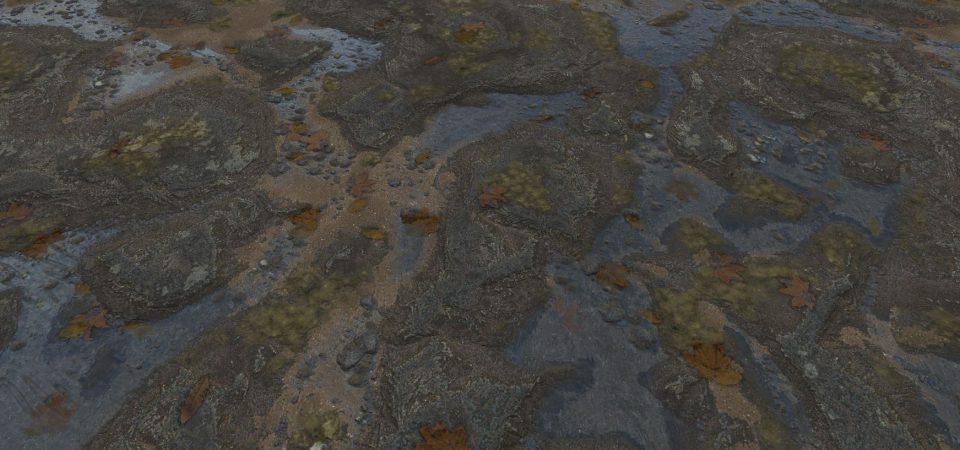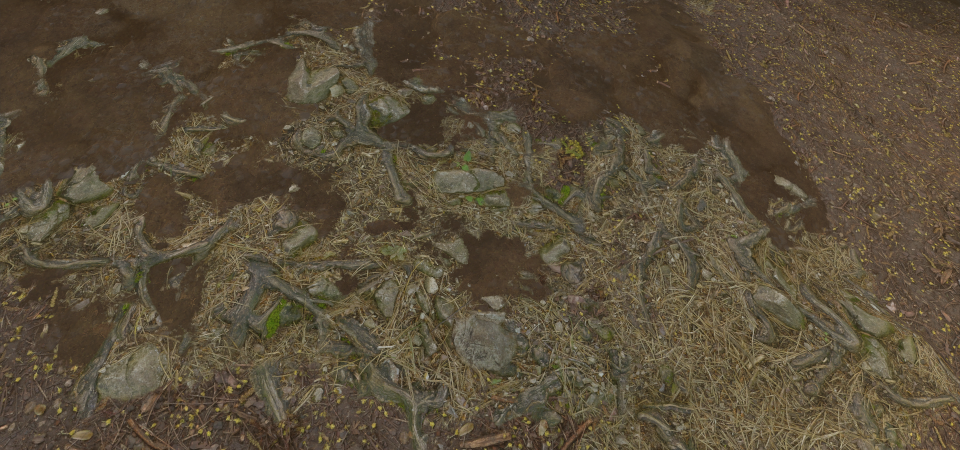This shader will be making use of the height-blending / lerping shader include described on my previous blog. If you want to find out how that works it’s all covered here.
For many games a dynamic weather system is as important as a day night cycle. Sometimes this is just to provide randomised weather events to add variation, and other times this is part of a scripted event, or area based trigger. Whatever the reason for the effects, it’s important that the environment reacts to the weather.
This blog will be the first in a series creating a shader that adds various dynamic weather effects to surfaces. For this post, we’ll cover adding dynamic standing ground water to any surface. Everything covered in this post is available as a download at the end.

